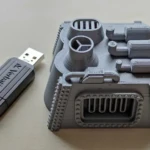The Ultimate Guide to Choosing the Right Steps for Your Step-by-Step Process
Are you struggling to create a clear and effective step-by-step process for your project or business? Choosing the right steps can be overwhelming, but with a structured approach, you can simplify the process and achieve your goals. In this comprehensive guide, we’ll walk you through a step-by-step process for selecting the perfect steps for your unique needs.
Step 1: Define Your Goals and Objectives
Before creating a step-by-step process, it’s crucial to define your goals and objectives. What do you want to achieve? What are the key performance indicators (KPIs) that will measure your success? Be specific and clear about what you want to accomplish. Write down your goals and objectives, and prioritize them.
- Why is this important? Clearly defined goals provide a foundation for your step-by-step process, ensuring that each step aligns with your objectives.
Step 2: Identify Your Target Audience
Who is your target audience? Who will be following the step-by-step process? Understanding your audience is vital to designing a user-friendly and effective process. Consider their needs, pain points, and expectations.
- Why is this important? Knowing your audience helps you create a process that resonates with them, increasing adoption and engagement.
Step 3: Break Down Complex Tasks into Smaller Steps
Complex tasks can be overwhelming, but breaking them down into smaller, manageable steps can make them more achievable. Identify the most critical tasks and break them down into smaller, actionable steps.
- Why is this important? Breaking down complex tasks simplifies the process, reducing overwhelm and increasing productivity.
Step 4: Determine the Best Order for Your Steps
Arrange your steps in a logical and logical order, considering the flow and sequence of tasks. Prioritize tasks that require attention, and group similar tasks together.
- Why is this important? A well-organized step-by-step process streamlines the workflow, reducing confusion and increasing efficiency.
Step 5: Optimize Your Steps for Mobile and Accessibility
With the majority of users accessing information on-the-go, it’s essential to design your step-by-step process with mobile and accessibility in mind. Ensure that each step is easy to follow, with clear instructions and minimal scrolling.
- Why is this important? A mobile-friendly and accessible step-by-step process increases adoption and engagement, reaching a wider audience.
Step 6: Use Visual Aids and Illustrations
Visual aids and illustrations can simplify complex tasks, making it easier for users to understand and follow the process. Use icons, images, and infographics to break up text and enhance readability.
- Why is this important? Visual aids increase engagement, reducing cognitive overload and improving comprehension.
Step 7: Test and Refine Your Step-by-Step Process
Test your step-by-step process with a small, representative group of users. Collect feedback, identify pain points, and refine the process accordingly.
- Why is this important? Testing and refining ensures that your step-by-step process is effective, user-friendly, and efficient.
Conclusion
Choosing the right steps for your step-by-step process requires a structured approach. By following these 7 steps, you’ll be able to create a clear, concise, and user-friendly process that achieves your goals and objectives. Remember to always keep your audience in mind, prioritize tasks, and use visual aids to enhance the experience. With these tips, you’ll be well on your way to creating a highly effective and innovative step-by-step process.

















